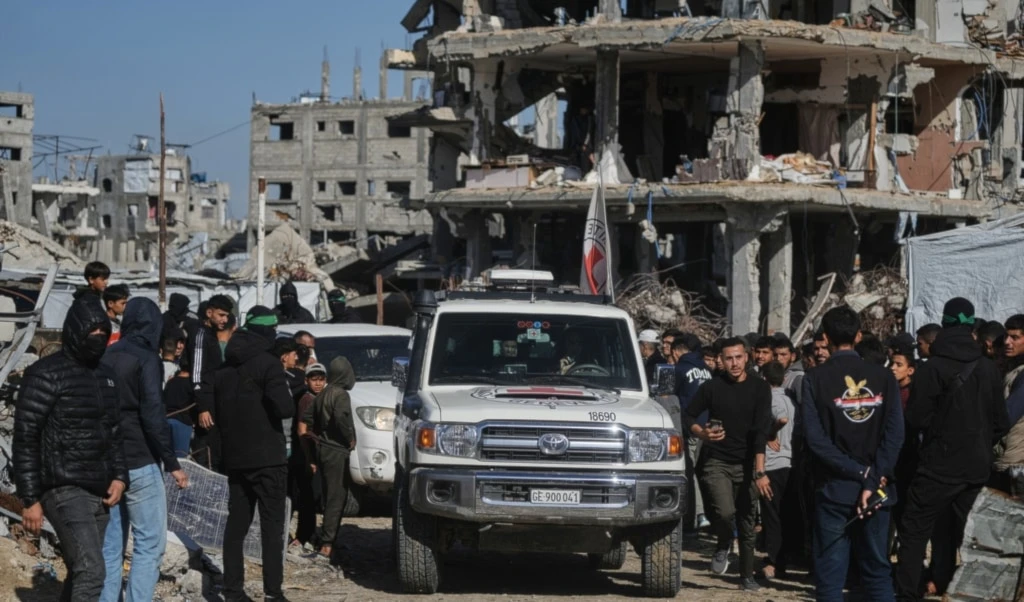NASA data on plant ‘sweating' could help predict wildfire severity
How is NASA studying wildfires, and what is the ECOSTRESS mission?
-

NASA data on plant ‘sweating' could help predict wildfire severity.
Even in drought-stricken California, not all areas are equally vulnerable to wildfires. A recent study that used data from NASA's ECOSTRESS mission discovered relationships between wildfire intensity and water stress in plants measured months before the blaze.
The correlations were not simply due to dry plants burning faster than hydrated plants; some areas with sufficient vegetation burned more severely, possibly because fires had more fuel to consume.
The study, led by scientists at NASA's Jet Propulsion Laboratory in Southern California, is based on plant water-use data collected by the ECOsystem and Spaceborne Thermal Radiometer Experiment on Space Station, or ECOSTRESS.
What did the study find?
When plants run out of water, the instrument measures their temperature as they heat up. Researchers focused on data collected during parts of 2019 and early 2020 in six areas - three in the Southern California mountains and three in the Sierra Nevada - that were later scorched by wildfires for this study.
Other research has found that wildfire season in the Western United States is beginning earlier in the year and becoming longer and more severe.
Read next: California sees its largest fire in 2022
In California, a state with 33 million acres of forest - much of which is managed by federal, state, and local agencies - detailed insights into the relationship between wildfire and the availability of water to vegetation could help fire management officials determine not only whether an area is likely to catch fire, but also how severe the damage will be if it does.
“We are in an intense megadrought – the worst in 1,200 years – and it’s creating conditions for more catastrophic fires,” said Christine Lee, a study co-author at JPL.
Read next: Northern California wildfire threatens 500 buildings
Researchers discovered that the rate at which plants release water through "sweating" - a process known as evapotranspiration - as well as how efficiently they use water for photosynthesis, can help predict whether subsequent wildfires are more or less intense.
Both indicators show whether a plant community is getting enough water or is stressed due to a lack of it.
Tracking Plant Stress
Plants, like humans, struggle to function in extreme heat. Similarly to how sweating keeps humans cool, plants regulate their temperature through evapotranspiration.
Evapotranspiration combines the rate at which plants lose water as it evaporates from the soil with transpiration, which occurs when they release water through stomates in their leaves. To avoid losing too much water, plants begin to close their stomates when they become too dry.
“As a result, they start to heat up because they don’t have the benefit of ‘sweating’ anymore,” Lee said.
What is ECOSTRESS?
“With ECOSTRESS, we can observe these really fine changes in temperature, which are used to understand changes in evapotranspiration and water-use efficiency.”
Slower evapotranspiration and lower efficiency, in general, indicate that plants are water-stressed. Higher values indicate that the plants are receiving adequate water.
ECOSTRESS monitors evapotranspiration with a high-resolution thermal radiometer capable of measuring the temperature of patches of the Earth's surface as small as 130 by 230 feet (40 by 70 meters).
High Versus Low Stress
Researchers discovered that water-stress-related variables, along with elevation, were dominant predictors of burn severity in areas hit by three Southern California wildfires in 2020: the Bobcat Fire in the Angeles National Forest, as well as the Apple and El Dorado fires in the San Bernardino National Forest.
The primary type of vegetation in an area determined whether higher or lower stress predicted more severe burning, according to Pascolini-Campbell. Stressed pine forests, for example, tended to burn more severely, implying that drier conditions made trees more flammable.
Meanwhile, in grasslands, lower stress was associated with more burn damage, suggesting that vigorous vegetation growth produced more fuel, resulting in more intense blazes.
NASA studies wildfires
The research comes as NASA ramps up efforts to use its technology, expertise, and resources to study wildfires. NASA announced the formation of NASA Wildland FireSense in May, an initiative aimed at bringing experts from various disciplines, as well as advanced technology and analytical tools, together to develop approaches that can inform and guide fire management decision-makers.
The importance of tools like ECOSTRESS, which is set to run until September 2023, will grow as climate change increases the risk of wildfires across the Western United States, Pascolini-Campbell explained.
“It’s a high-priority region for using these types of studies to see which areas are the most vulnerable,” she added.
Read next: The American Heatwave's Unforeseen Losses

 5 Min Read
5 Min Read








